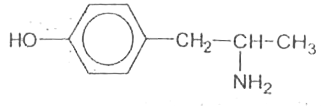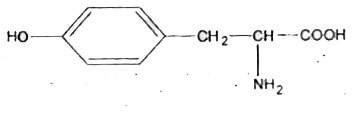Which of the following ion is likely to form white complexes
none of the above
The correct Answer is:A
To determine which ion is likely to form white complexes, we need to analyze the electronic configurations of the given ions and their ability to undergo d-d transitions.
1. Identify the Ions: The ions in question are Cadmium (Cd²⁺), Titanium (Ti³⁺), and Chromium (Cr³⁺).
2. Determine the Electronic Configuration:
- Cadmium (Cd): The atomic number of cadmium is 48. The electronic configuration is:
- Neutral Cd: (Kr) 4d¹⁰ 5s²
- For Cd²⁺: Remove 2 electrons from the outermost shell (5s), resulting in (Kr) 4d¹⁰.
- Titanium (Ti): The atomic number of titanium is 22. The electronic configuration is:
- Neutral Ti: (Ar) 4s² 3d²
- For Ti³⁺: Remove 3 electrons (2 from 4s and 1 from 3d), resulting in 3d¹.
- Chromium (Cr): The atomic number of chromium is 24. The electronic configuration is:
- Neutral Cr: (Ar) 4s² 3d⁵
- For Cr³⁺: Remove 3 electrons (2 from 4s and 1 from 3d), resulting in 3d³.
3. Analyze the d-Orbital Electrons:
- Cd²⁺: (Kr) 4d¹⁰ has all paired electrons (10 electrons in d-orbitals). Therefore, it cannot undergo d-d transitions.
- Ti³⁺: 3d¹ has 1 unpaired electron. It can undergo d-d transitions, which would result in color.
- Cr³⁺: 3d³ has 3 unpaired electrons. It can also undergo d-d transitions, which would result in color.
4. Conclusion: Since Cd²⁺ has all paired electrons and cannot undergo d-d transitions, it is likely to form a white complex. The other ions (Ti³⁺ and Cr³⁺) have unpaired electrons and can exhibit color due to d-d transitions.
Final Answer:
Cadmium ion (Cd²⁺) is likely to form white complexes.
---
- Cadmium (Cd): The atomic number of cadmium is 48. The electronic configuration is:
- Neutral Cd: (Kr) 4d¹⁰ 5s²
- For Cd²⁺: Remove 2 electrons from the outermost shell (5s), resulting in (Kr) 4d¹⁰.
- Titanium (Ti): The atomic number of titanium is 22. The electronic configuration is:
- Neutral Ti: (Ar) 4s² 3d²
- For Ti³⁺: Remove 3 electrons (2 from 4s and 1 from 3d), resulting in 3d¹.
- Chromium (Cr): The atomic number of chromium is 24. The electronic configuration is:
- Neutral Cr: (Ar) 4s² 3d⁵
- For Cr³⁺: Remove 3 electrons (2 from 4s and 1 from 3d), resulting in 3d³.
- Cd²⁺: (Kr) 4d¹⁰ has all paired electrons (10 electrons in d-orbitals). Therefore, it cannot undergo d-d transitions.
- Ti³⁺: 3d¹ has 1 unpaired electron. It can undergo d-d transitions, which would result in color.
- Cr³⁺: 3d³ has 3 unpaired electrons. It can also undergo d-d transitions, which would result in color.
Cadmium ion (Cd²⁺) is likely to form white complexes.
Topper's Solved these Questions
- BOOK - FIITJEECHAPTER - TRANSITION ELEMENTS & COORDINATION COMPOUNDSEXERCISE - ASSIGNMENT PROBLEMS (OBJECTIVE)(Level- II)40videos
TRANSITION ELEMENTS & COORDINATION COMPOUNDS
- BOOK - FIITJEECHAPTER - TRANSITION ELEMENTS & COORDINATION COMPOUNDSEXERCISE - ASSIGNMENT PROBLEMS (COMPREHENSION -I)(Level- II)(Read the following paragraph and answer the questions given below)8videos
TRANSITION ELEMENTS & COORDINATION COMPOUNDS
- BOOK - FIITJEECHAPTER - TRANSITION ELEMENTS & COORDINATION COMPOUNDSEXERCISE - ASSIGNMENT PROBLEMS (SUBJECTIVE)(Level- II)1videos
TRANSITION ELEMENTS & COORDINATION COMPOUNDS
- BOOK - FIITJEECHAPTER - THERMODYNAMICS AND THERMOCHEMISTRY EXERCISE - SINGLE INTEGER ANSWER TYPE QUESTIONS5videos
THERMODYNAMICS AND THERMOCHEMISTRY
Similar Questions
Knowledge Check
- Question 1 - Select One
Which of the following acids are likely to form zwitter ions?
A B
B C
C D
D
- Question 2 - Select One
Which of the following acids are likely to form Zwitter ions?
A B
B C
C DAll of the above
DAll of the above - Question 3 - Select One
Which of the following metal ions will form complexes with the same magnetic moment and geometry irrespective of the nature of ligands ?
ANi2+BFe2+CCu2+DCo2+
In the tet of NO−3ion, the dark brown ring complex [Fe(H2O)5(NO)]SO4 is formed which of the following is false for this complex?
View SolutionWhich of the following complex ions is dimagnetic ?
View SolutionWhich of the following complexes is least likely to exist ?
View SolutionWhich of the following complexes is least likely to exist ?
View SolutionWhich of the following divalent metal ion form the most stable complexes ?
View Solution

